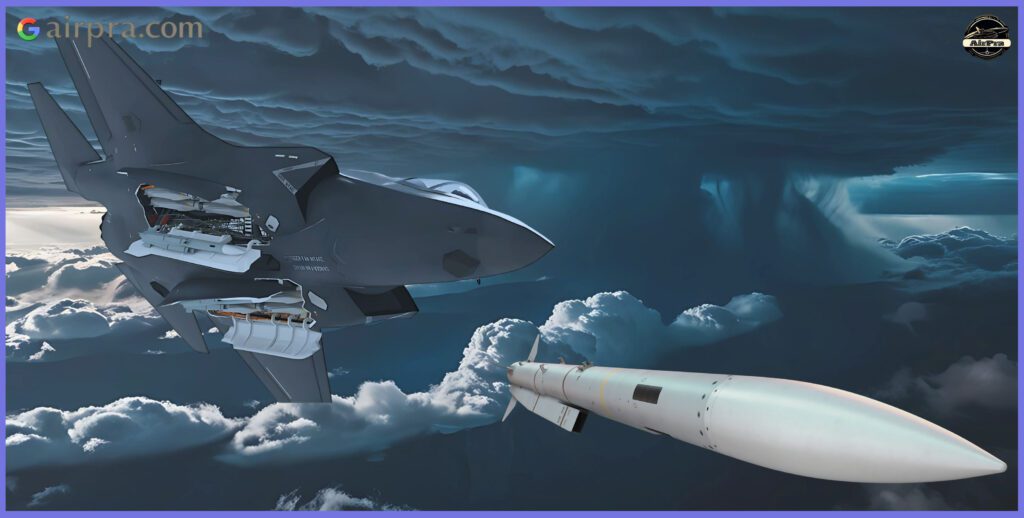With the evolution of aerial threats, modern air forces demand superior beyond-visual-range capabilities. Meteor by MBDA Turns Modern Jets Into Predators, enabling them to strike distant targets with unmatched precision. Its advanced propulsion and guidance systems ensure dominance in air-to-air combat, transforming fighters into true long-range hunters of the sky.
Perhaps you know an interesting fact about beyond-visual-range (BVR) air-to-air missiles, but let me recap it. Despite their high cost, the efficiency of BVR air-to-air missiles has always been criticised.
These missiles often fall short of expected performance because they require large radars, two-stage propulsion systems, and other complex components. This increases the missile’s weight, leading to higher drag and reduced manoeuvrability for the fighter jet.
Another disadvantage is that fighter pilots have been reluctant to use BVR missiles at BVR ranges due to difficulty distinguishing between friends and foes. As a result, most BVR missiles are fired at visual range.
Data from 1965–1982 revealed that Western air forces scored only 4 BVR kills out of 528 total kills, with most kills during that period being achieved using guns or WVR missiles. However, during the 1991 Gulf War, the number of BVR kills increased to 16 due to technological advancements in missile design.

Despite all these facts, the continuous development of highly accurate missiles to achieve 100% success is an ongoing and never-ending process. Right after the end of the Cold War, both America and Russia focused on creating sophisticated, high-quality weapons. They have been consistently refining the development of their AIM-120 AMRAAM, Vympel R-37, and Vympel R-77, all of which fall under the BVR missile category.
On the other hand, European nations also require state-of-the-art BVR missiles to arm their Rafale, Gripen, and Typhoon fighters. While these jets are equally capable of delivering American missiles, equipping them with a core European air-to-air missile enhances interoperability and export independence, rationalises and consolidates the European missile industry.
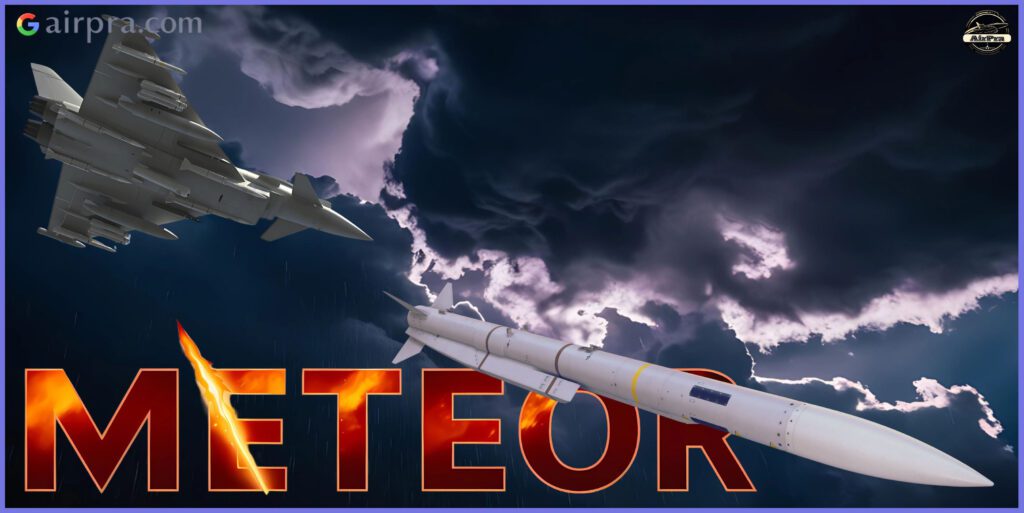
Additionally, it provides a counterweight to U.S. dominance in this field and lowers the risk of constraints on Eurofighter, Gripen, and Rafale exports.
Taking several other factors into consideration, a collaborative effort involving six major European nations—the UK, Germany, Italy, France, Spain, and Sweden—ultimately resulted in the development of a state-of-the-art beyond-visual-range missile known as the Meteor BVR AAM.
The development of the Meteor BVR missile program began in the early 1990s, intending to replace the Skyflash AAM on the Eurofighter Typhoon. However, full-scale development and production officially commenced in 2003, following the signing of a £1.2 billion contract by the UK on behalf of six nations.

What Is the Meteor BVR AAM All About?
The Meteor is a European beyond-visual-range air-to-air missile (BVRAAM) developed by MBDA, featuring active radar guidance. It is designed to intercept a variety of aerial threats—including fighter jets, cruise missiles, and UAVs—even in environments affected by strong electronic countermeasures (ECM). Its operational range extends beyond 200 km (approximately 110 nautical miles).
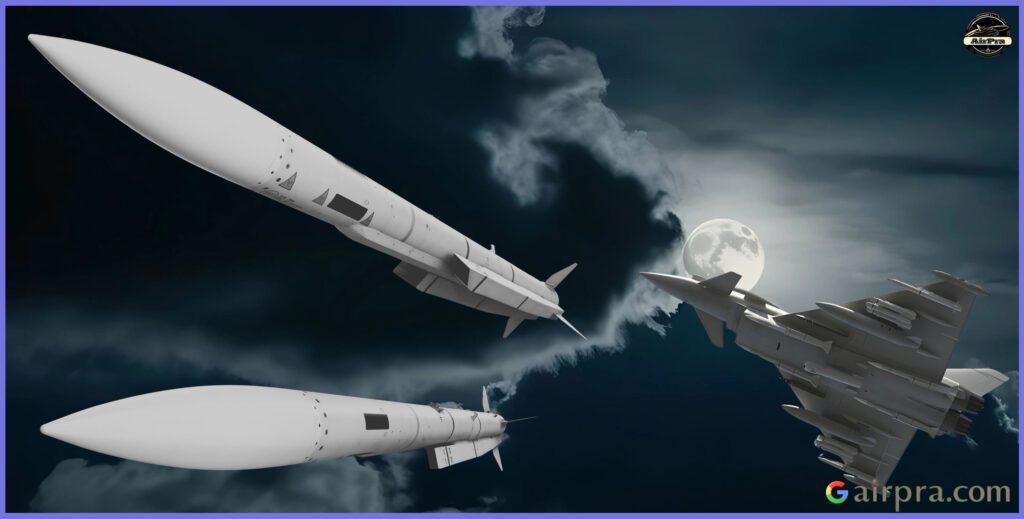
Powered by a solid-fuelled ramjet engine, Meteor maintains speeds above Mach 4 and delivers continuous thrust throughout its flight, enabling sustained mid-course acceleration. MBDA claims it offers kinetic performance that is three to six times greater than comparable air-to-air missiles currently in service.
The missile incorporates both proximity and impact fuzes, ensuring maximum reliability and destructive capability. Meteor officially entered service with the Swedish Air Force aboard the JAS 39 Gripen in April 2016, reaching its initial operational capability (IOC) in July of the same year.
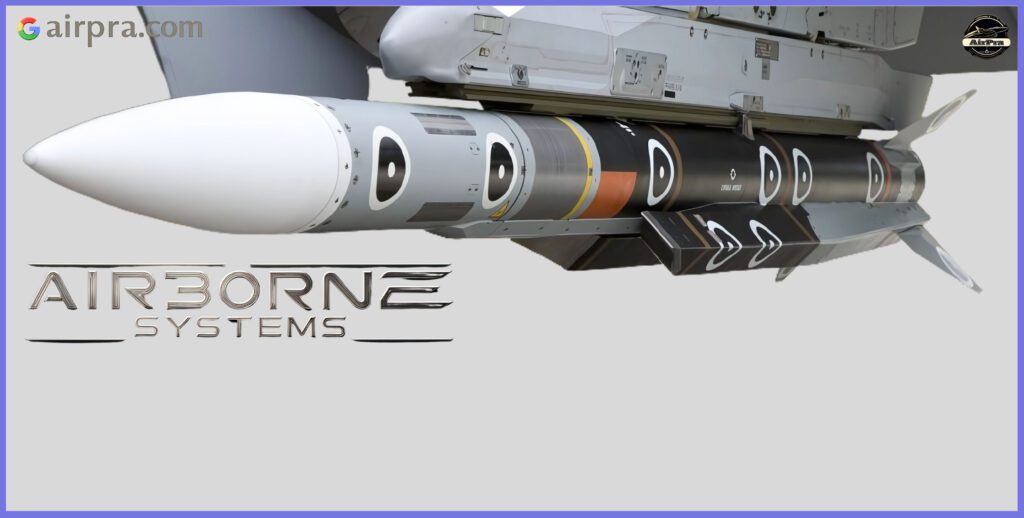
Meteor Technology Design Overview: Features That Set It Apart
Long-Range Capability: Meteor offers exceptional range, far surpassing traditional air-to-air missiles like the AIM-120 AMRAAM. Its maximum range can reach up to 200 km (110 nmi), with a No Escape Zone of 60 km (32 nmi) or more, enabling aircraft to engage enemy targets well beyond visual range (BVR).
Active Radar Guidance: The missile uses active radar homing, which means it can track and engage targets autonomously once launched. This reduces the need for continuous radar lock from the launch platform, allowing the launching aircraft to manoeuvre or disengage quickly after firing.
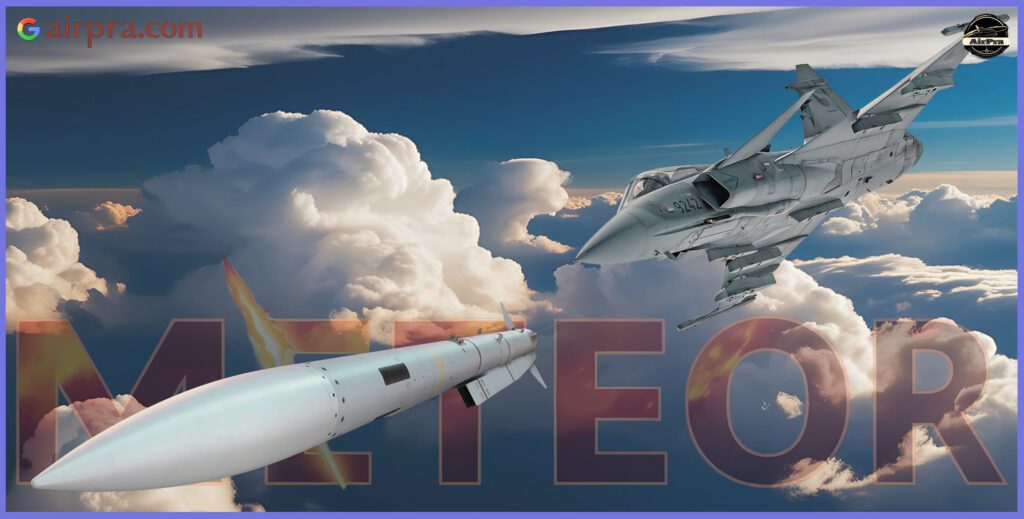
High-Accuracy Targeting: The missile’s advanced radar seeker provides precise targeting, even in cluttered or jamming environments. Meteor’s ability to lock onto and engage fast, manoeuvring targets at long ranges is one of its standout features. It is a joint development between MBDA’s Seeker Division and Thales Airborne Systems, building on their cooperation with the AD4A (Active Anti-Air Seeker) family of seekers, which equip the MICA and Aster missiles.

Data Link for Midcourse Updates: Meteor features an advanced data link that enables real-time updates during its flight. This allows the launching aircraft to provide mid-course corrections based on changing target dynamics or retargeting if required, including data from offboard third parties.
The data link is capable of transmitting information such as the missile’s kinematic status and notifying when the seeker acquires the target. Overall, it ensures the missile can adapt to dynamic battle environments.
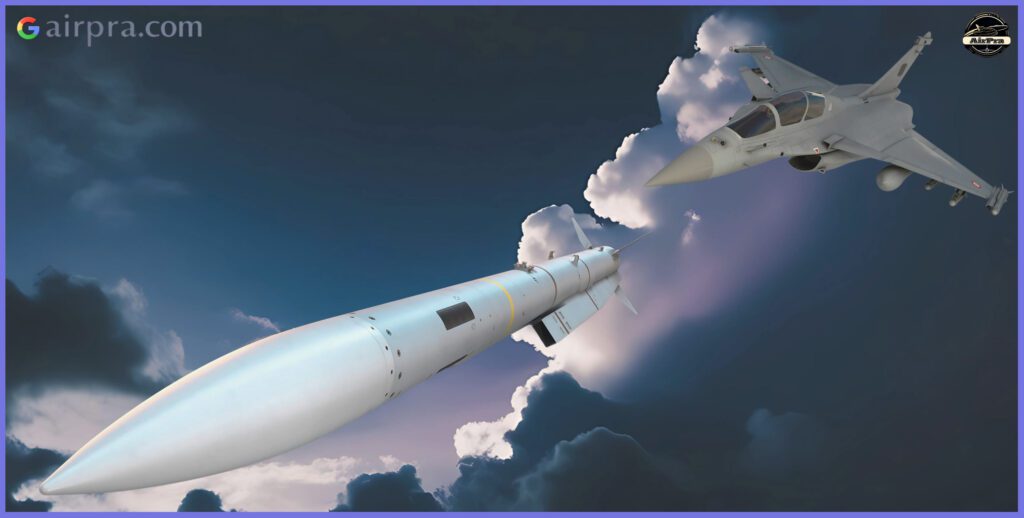
Challenges in FAS Placement and Design: The missile’s flight path is managed through the use of four fins positioned at the rear, which provide aerodynamic control. The Meteor Fin Actuation Subsystem (FAS) is engineered to achieve sharp turn rates while ensuring efficient intake and propulsion functionality. However, the FAS design is made more complex by the linkages that connect the actuator housed in the fairing to the fins mounted on the missile’s body.
Propulsion Efficiency and Manoeuvrability: The Meteor missile employs a propulsion sub-system (PSS) that consists of a throttleable ducted rocket (TDR) ramjet with an integrated nozzleless booster.
TDR propulsion offers a long-range, a high average speed, a broad operational envelope from sea level to high altitude, and a flexible mission profile enabled by active variable thrust control. Unlike traditional rocket motors, which burn out after a few seconds, the ramjet sustains thrust throughout the missile’s flight.

The ramjet also provides better energy management compared to solid-propellant motors, resulting in no-escape zones that are significantly larger than those of conventional air-to-air missiles.
Additionally, the Meteor features a high-efficiency titanium intake and advanced aerodynamics to maximise propulsion effectiveness, ensuring superior performance and exceptional manoeuvrability during its terminal phase.
Resistance to Jamming and Countermeasures: Meteor is designed to be resistant to both electronic warfare (EW) jamming and decoys. Its advanced radar and processing technologies allow it to perform well in contested environments, where traditional missiles might be neutralised by enemy countermeasures.

Meteor Specifications: The Missile That Dominates the Skies
Mass: 190 kg (419 lb)
Length: 12 ft (3.7 metres)
Diameter: 7 inches ( 178 mm )
Warhead: High Explosive Blast Fragmentation
Detonation: RF Proximity / Impact fuse
Seeker: Active RF
Engine: Throttleable ducted rocket_TDR ( Ramjet )
Range: Max_ 200+ km (110 nmi), and No Escape Zone_ 60km (32 nmi)
Speed: Mach 4
Guidance system: Inertial guidance, Mid-course update via data link and Terminal phase_ Active Radar Homing
Launch Platform: The Eurofighter Typhoon, Dassault Rafale, and Saab Gripen are the primary aircraft integrated with the missile, and integration efforts are also underway for the F-35 and South Korea’s KF-21 Boramae fighter jet.
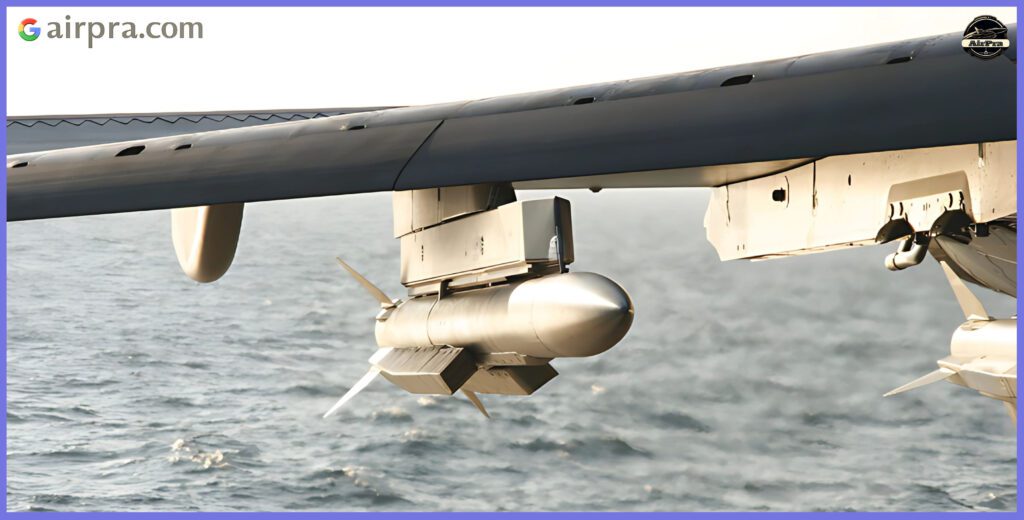
Strategic Powerhouses: Countries Armed with the MBDA Meteor Missile
The MBDA Meteor missile is mainly used by European nations that participated in its development. Beyond Europe, countries such as Brazil, Croatia, Greece, Qatar, and India have also added it to their air forces as of 2024. South Korea is expected to join the list of operators soon, with plans to integrate the missile into its arsenal according to its scheduled timeline.

A Quick Message to Our Readers
Some details in our articles may change over time. For the most accurate and current information, we encourage you to check reliable and updated sources.
We’re passionate about bringing you trusted insights on military systems and global developments. Your support helps us continue this work. When you buy through our affiliate links, you’re helping us grow while getting quality products in return.
Your thoughts matter to us. If there’s a topic or defence system you’d like to learn more about, let us know in the comments—we’ll do our best to cover it.
Thank you for being part of our journey. We appreciate your time and interest—happy reading!
